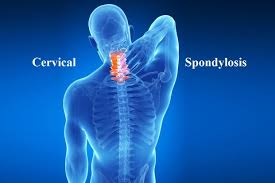In a observational, cross-sectional study Nákity et al. from the University of Szeged, published in BMC Medical Education to assess the diagnostic acumen and clinical decision-making of physiotherapists in Hungary concerning serious conditions presenting with cervical complaints, and identify influencing educational and experiential factors. The study revealed a significant deficiency in physiotherapists’ ability to identify critical cervical spine red flags, with only 22.7% recognizing these conditions. Postgraduate education and experience in orthopedic or trauma cases were linked with better diagnostic performance, emphasizing the necessity for enhanced curricular and continuing education 1).
Critical Review
This cross-sectional analysis uses a structured questionnaire with clinical vignettes drawn from international literature to probe diagnostic capability among Hungarian physiotherapists. The sample (N=128) is modest yet representative, skewed heavily toward females (89%), which reflects known workforce demographics in physiotherapy. The study commendably utilizes real-case scenarios, increasing clinical relevance. However, its reliance on self-administered online responses introduces potential biases—particularly selection bias and response reliability.
Statistical handling is appropriate (use of R software), though model transparency (e.g., full regression outputs, handling of potential confounders) is lacking. The findings are both concerning and unsurprising—physiotherapists were markedly more adept at identifying musculoskeletal issues than potentially life-threatening conditions, with poor recognition of red flags, a consistent problem in allied health diagnostics.
Despite its pragmatic design, the study is hampered by several limitations: absence of a control group (e.g., physicians or international physiotherapists), reliance on subjective judgment in case interpretation, and no longitudinal follow-up to test knowledge retention or post-training improvement.
The authors correctly conclude that curricular reform and structured postgraduate training are warranted. However, recommendations remain generic, with no proposed curriculum modules or pedagogical strategies. Neurosurgeons may glean from this the need for interprofessional education and stricter referral triage mechanisms to mitigate misdiagnosis delays.
Final Verdict:
While the study reinforces existing concerns regarding physiotherapist diagnostic capacity, it falls short of offering actionable curricular solutions. Methodologically adequate but conceptually modest.
Takeaway for Neurosurgeons:
Expect variable diagnostic acuity among physiotherapists managing cervical complaints—especially concerning red flag recognition. Vigilance in referral vetting is advised.
Bottom Line: Physiotherapist training gaps in cervical spine red flag identification highlight an ongoing systemic issue; interprofessional collaboration and structured postgraduate pathways are essential.
Rating: 5.5 / 10
Publication Date: July 16, 2025 Corresponding Author Email: nakity.kinga@szte.hu
